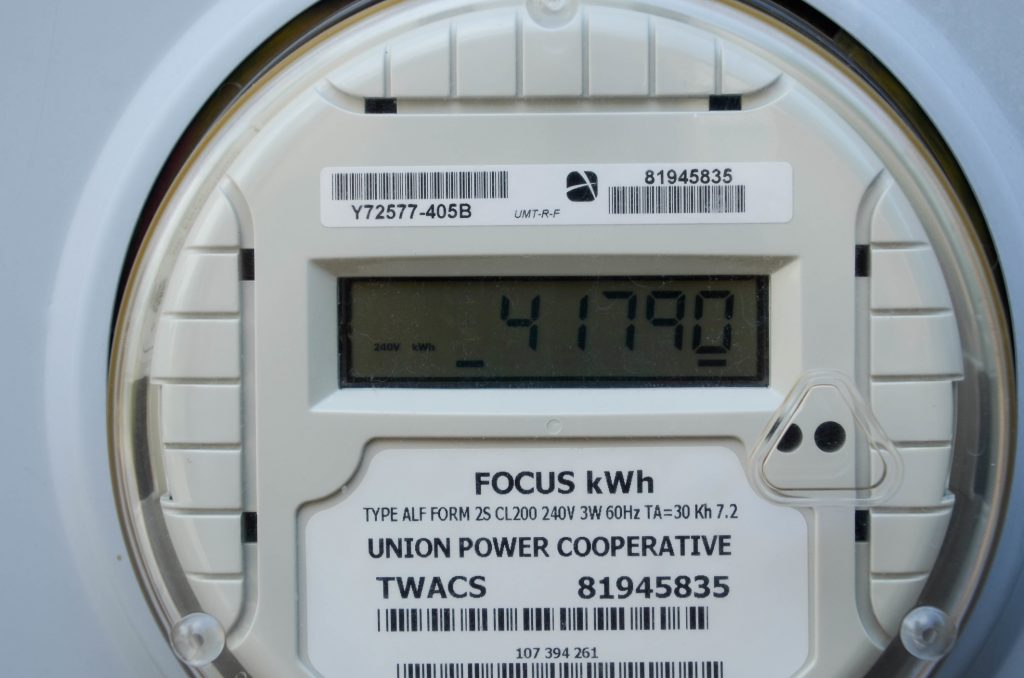Solar energy is measured in Kilowatts and Kilowatt hours. If you are unfamiliar with energy measurements, hearing these two terms tossed around is a bit confusing. We mention it a lot when explaining how we right-size your solar panel system as well as in describing how switching to solar can save you money. While the two units of measurement are related, they are not the same. So, what is the difference between Kilowatt size and Kilowatt hours, anyway?
Kilowatt Size
A watt (W) is the unit used to measure the power drawn at any given time; one Kilowatt (kW) is 1,000 watts (kilo always means 1,000 in metric system measurements). For example, take a look at the labels on some of your electronic devices. When they list the watts, it’s the number of watts it takes to turn the device on and power it. For example, if a lightbulb is a 100-watt light bulb, it takes 100 watts to turn on.
You can picture Kilowatts in the same way you look at water running out of the faucet. You might say to your kids, “You wasted like 5 gallons of water!” if they left the faucet dripping overnight. Similarly, if a device is plugged in overnight, you would refer to the amount of power that poured through the outlet into the device in terms of Kilowatts, instead of quarts or pints or gallons.
Kilowatt Hours
Kilowatt hours (kWh) is used to measure energy drawn over time and is used as the billing unit for energy delivered to homeowners. However, it’s not the number of Kilowatts you’re using per hour. It actually equals the amount of energy you’d use if you kept a 1,000-watt appliance running for an hour. So it would take 10 hours for a 100 watt light bulb to use 1 kWh, but a 2,000-watt appliance would use up 0.5 kWh in just half an hour.
How Terms Are Used
The amount of Kilowatt hours (kWh) you use per day determines the size of the Kilowatt solar system you need. According to the U.S. Energy Information Administration, “In 2018, the average annual electricity consumption for a U.S. residential utility customer was 10,972 Kilowatt hours (kWh), an average of about 914 kWh per month.” That means that the national average of daily energy use is about 30 Kilowatt hours.
However, that varies from household to household, and we want to design a solar energy system that fits your energy needs specifically.
How do you find your monthly Kilowatt hour average? Just take a look at your utility bills from the last few months. From there, you can probably average out how many Kilowatt hours you’ve used each month. If your utility bill doesn’t show the Kilowatt hours you’ve used, look for the beginning and ending meter readings listed on your statement. Then subtract the previous reading from the most recent one.
To find your average hourly Kilowatt hour usage, divide your monthly average by 30 days then divide again by 24 hours. The formula looks like this:
(Monthly kWh ÷ 30 days) ÷ 24 hours = Hourly kWh
From there, Aurora Energy solar consultants can help you determine the size of the solar panel system you need. Solar panels have a power range from 150 to 350 watts per panel. (Hint: the more watts a solar panel has, the fewer panels you need.)
Now that you know the difference between Kilowatt size and Kilowatt hours, and how these terms are used to design you a custom solar system, contact Aurora Energy today to set up your appointment for a free, no-obligation quote.




